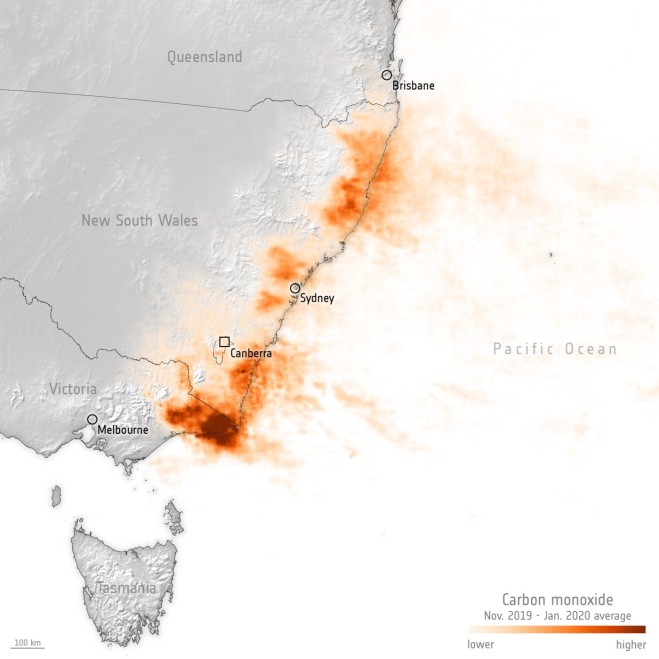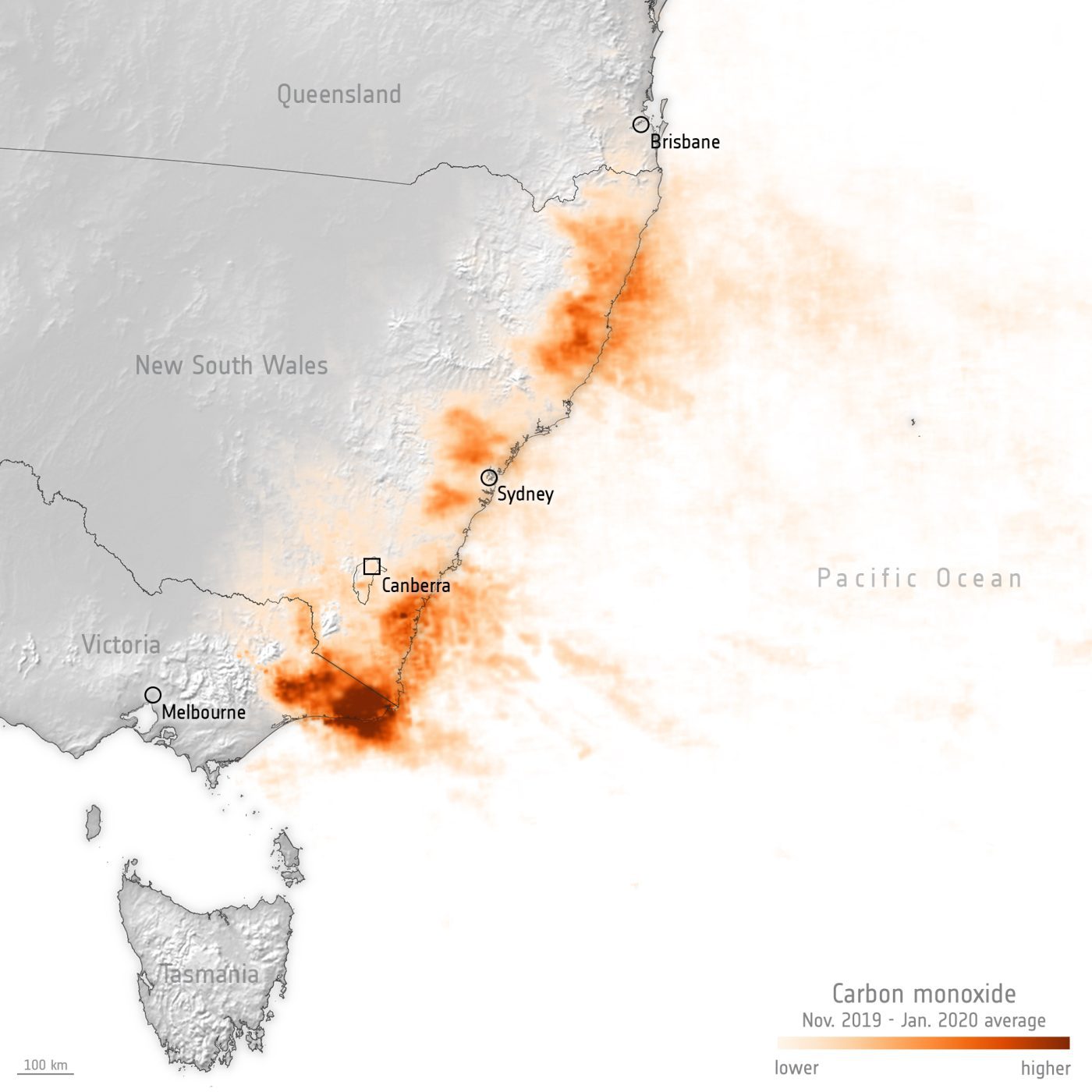

Australia is no stranger to bushfires, but the 2019-2020 season proved to be unprecedented. In southeast Australia, the fires were both intense and extensive. As much as 74,000 square kilometers of mostly eucalyptus forest, roughly 2.5 times the area of Belgium, was affected.
This image uses information from the Copernicus Sentinel-5P mission and shows the average carbon monoxide concentrations from Nov. 1, 2019, to Jan. 31, 2020. Carbon monoxide is commonly associated with traffic, but the concentrations here are due to the bushfires. Naturally, once in the air, it can cause problems for humans by reducing the amount of oxygen that can be transported in the bloodstream.
Image Credit: Contains modified Copernicus Sentinel data (2019-20), processed by ESA.